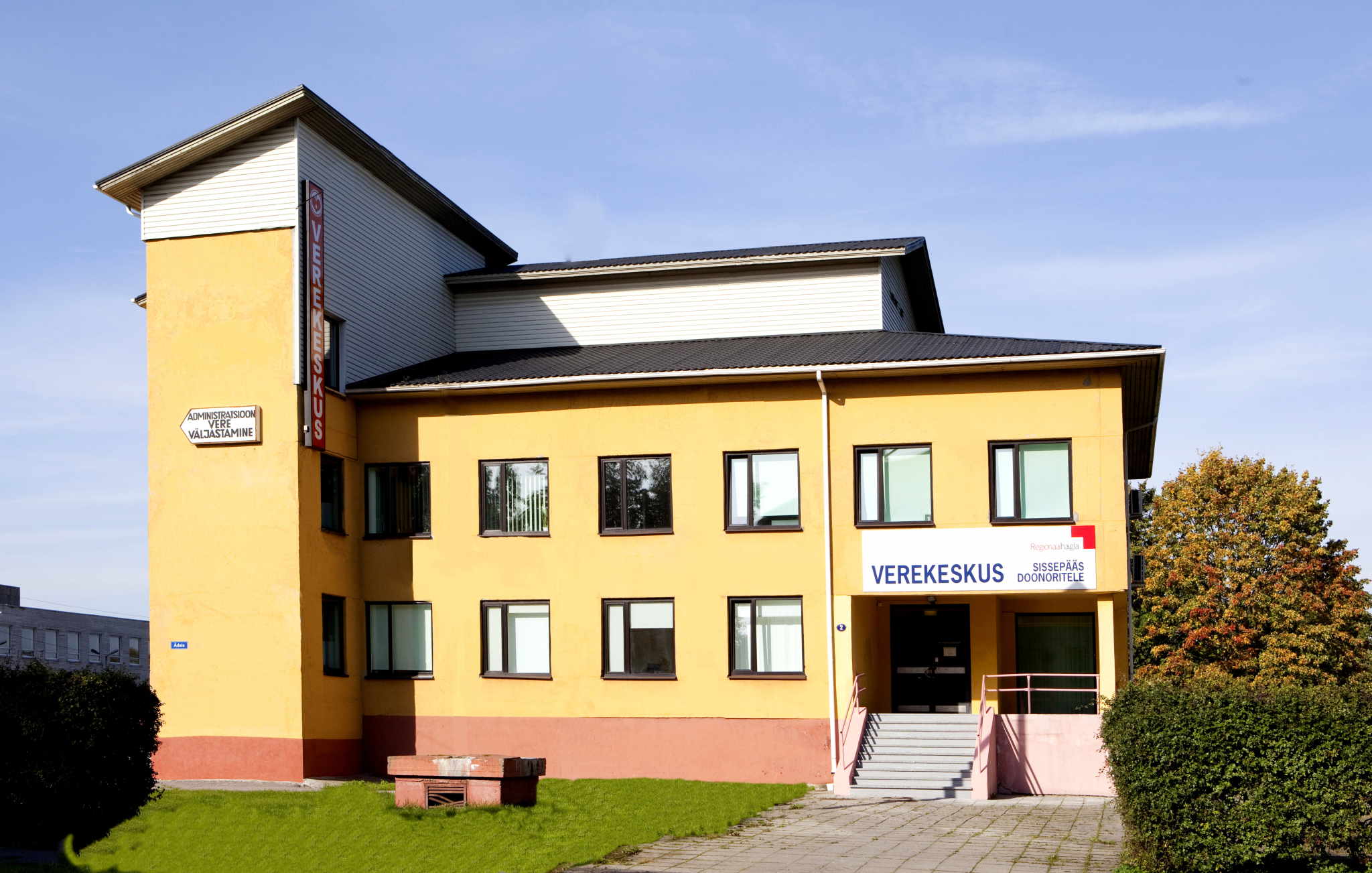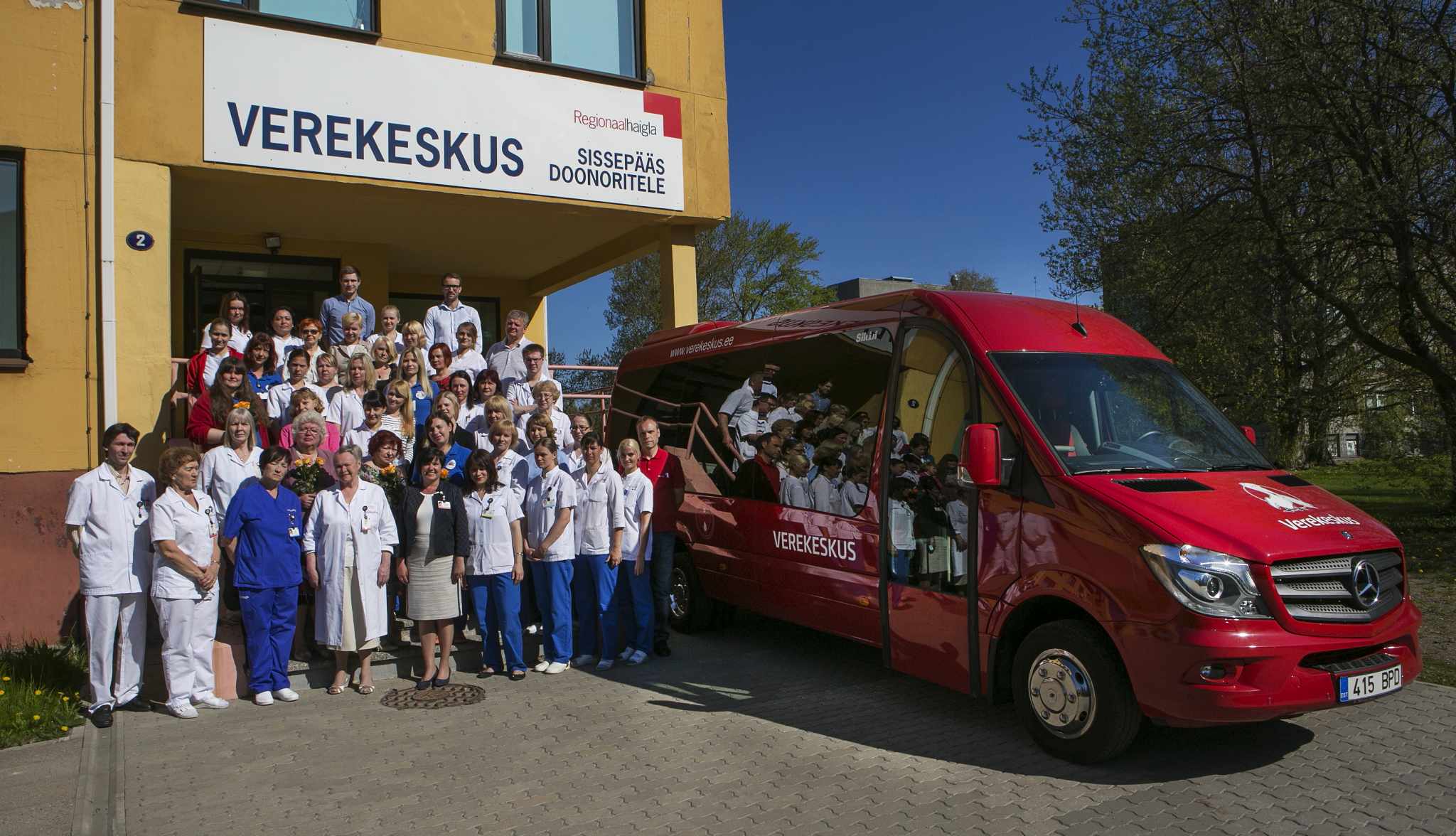The Blood Centre celebrated its 75th birthday with this inspiring call: come and help those in need reach their next birthday!
On 16 May, the Blood Centre of the North Estonia Medical Centre celebrated its 75th birthday. This was to mark the date on 16 May 1941 when Herman Paul Rossmann, chief physician of the National Station for Blood Transfusions, informed hospitals that the National Station for Blood Transfusions has started operating and would provide blood for transfusions. That is why 16th May is considered to be the birthday of the Blood Service. To lend more dignity to the solemn celebration of this day, active honorary donors who have donated blood over one hundred times were invited to the Blood Centre at midday. To make this day even more special for our donors, celebrations included live music, cake and letters of appreciation.
“Our deepest gratitude goes out to our exceptional regular donors who have taken the time to make a contribution to saving the lives of others over one hundred times – they are the real heroes. On our birthday, we would like to express our sincere appreciation in the name of the Blood Centre as well as those in need of help to our new, long-time donors whose lifestyle and desire to help others have saved many lives,” said Dr Riin Kullaste, Head of the Blood Centre. She added: “By giving blood, we can make sure that Estonia has the supplies needed to save the lives of all who need blood – after all, nobody is safe from accidents and other misfortunes, which is why we would like to get this message out to all healthy, caring Estonians: come and help those in need reach their next birthday!” Donor blood is used for operations and complicated births, and in treating patients suffering from cancer, liver disease, a haemorrhage, severe injuries, anaemia, leukaemia, burns and many other diseases and conditions. Also, donor blood makes it possible to carry out many planned operations that would otherwise be impossible due to excessive blood loss.
Celebrations for the Blood Centre’s 75th birthday will continue in the autumn with the conference “From Vein to Vein” on 28 October, which will include a number of interesting presentations on the Blood Centre’s area of work and on the use of blood in hospitals. What is more, this summer marks another milestone regarding our donor tents – 10 years have passed since the summer we first started to organise those events.
The Blood Centre, operating under the Diagnostics Division of the North Estonia Medical Centre, employs 96 people, among them 10 doctors, 31 nurses,13 lab technicians, 6 preparation operators, 12 receptionists, 5 assistants and others. Astrid Kroonmäe, who currently works as a nurse at the DoonoriFoorum office, is our longest-serving employee, having worked at the Blood Centre for 45 years.
Today, the Blood Centre of the North Estonia Medical Centre is the largest institution in Estonia to prepare blood components. We collect blood, prepare, test, store and issue blood components and ensure that blood components are available to healthcare institutions 24/7. The Blood Centre provides blood components to 14 hospitals in Estonia.
The number of donors has more than doubled over the years of its operation – in 2015, the Blood Centre served 19,488 donors who gave blood a total of 32,528 times. In the entire territory of Estonia, 34,640 donors were served and 59,013 blood donations were made last year. In 2015, a total of 80,101 transfusions of various blood components were given to 18,687 patients.
On the history of the Estonian Blood Service, Dr Riin Kullaste says: “Although we have not been able to locate the original document on the foundation of the National Station for Blood Transfusions, it is most likely that such an order was received in early 1941 from the USSR’s People’s Commissariat for Health in Moscow. However, it is a known fact that on 21 March 1941 Herman Paul Rossmann, chief doctor of the National Station for Blood Transfusions, forwarded a request to the I Hospital of Tallinn (currently the East Tallinn Central Hospital) to provide premises for the future institution and, on 16 May 1941, Dr Rossmann informed hospitals that the National Station for Blood Transfusions has started operating and would provide blood for transfusions. On 24 May 1941, an article titled “Saving Lives with Blood Transfusions” was published in the Rahva Hääl daily, including the following information: “The Central Institute in Moscow opened a National Station for Blood Transfusions in the I Hospital of Tallinn, run by Dr Herman Paul Rossmann. Blood donations were actually taken and preserved by Dr Bruno Habicht who had studied the necessary techniques in Moscow under Dr Bogdasarov.
According to records, the National Station for Blood Transfusions had more than 90 donors. At first, donors were paid for giving blood, except during war-time. In the beginning, blood supplies were provided for free. Hospitals only had to cover the cost of a blood preservation bottle or ampoule – 30 roubles. Preserved blood was transported to hospitals near the front with a nationalised Alfa-Romeo sports car.”
Throughout its 75-year-history, the Blood Service has been operating out of a number of premises all over the city, besides Ravi Street in Sakala and Lai Street. In 1987, we moved to our current building in Ädala Street and, in 2009, we opened the DoonoriFoorum office on Narva Road, in the centre of Tallinn.
Over the years, 11 people have served as heads of the Blood Centre, among them Herman-Paul Rossmann, Natalia Utkina, August Rosenfeld, Sergei Tsistjakov, Klavdia Silajeva, Liidia Titman, Raivo Kolle, Miia Sultsmann, Eneli Rebane, Tatjana Plahhova and Riin Kullaste (current head from 2005).
Blood Centre (2 Ädala St.)
Mon, Fri 8:00-16:00
Tue-Thu 11:00-19:00
DoonoriFoorum
5 Narva Rd., III floor of the Foorum Centre
Mon-Thu 11:00-19:00
Fri 9:00-14:00
On working days, the Blood Centre’s mobile team is represented at various cultural venues and institutions. Our mobile team sessions schedule is available at http://www.verekeskus.ee/doonorile/valjasoitude-graafik/
For additional information: www.verekeskus.ee, www.doonoritelgid.ee, on Facebook Doonorid ja Sõbrad, on Instagram @verekeskus.


